REVIEW – Final Fantasy VII Remake set a new standard: breathtaking visuals, an expanded narrative, and immersive combat. From the demo, it was clear Final Fantasy VII Rebirth was set to follow in its footsteps, but does it maintain this excellence through to the final credits?
After Remake’s thrilling climax, we were left eager to see where the story would head, armed with knowledge from the original game. Rebirth faithfully follows the blueprint of the PS1 classic, enriching it with fresh narrative threads and introducing elements previously unseen in the series.
The team ventures beyond Midgar in pursuit of Sephiroth, encountering enigmatic, robed figures along the way, each marked with a number – also in pursuit of the iconic, silver-haired villain. Where these mysterious figures appear, trouble is never far behind. The more encounters with them, the more we uncover about their origins and motives.
Like its predecessor, Rebirth dedicates attention to exploring new locations, stories, and characters, enriching the experience. The game guides us patiently, allowing full immersion into its world and preparing us for upcoming challenges. It also subtly nods to its classic predecessor, bringing back familiar faces and echoing past adventures.
Visuals and Soundscapes with Some Trade-offs
Even in “Graphics Mode” for enhanced visual quality, I noticed some graphical trade-offs. While characters and creatures were rendered flawlessly, some environmental textures showed a dip in quality. These details generally didn’t distract, as the game’s focal points boasted impressive detail. Certain elements, like cave walls, however, didn’t meet this standard. This is a minor critique, noticeable only upon close inspection, with cave walls being a notable exception displaying less detail than their surroundings.
Switching briefly to “Performance Mode,” I saw a spike in frame rate, but the visual fidelity slightly diminished. After a short while, switching back to Graphics settings, although the frame rate decreased, I was soon fully engrossed in the game as before, deciding to stick with this mode.
The music remains consistently fantastic throughout Rebirth. Following Nobuo Uematsu’s masterful composition, the game’s soundtrack respectfully nods to the original, offering modern renditions of iconic tunes. The fresh takes on familiar melodies surprised me; often, I only recognized them midway through. This revelation was far from jarring – the updated tracks meld perfectly with their respective scenes, drawing you deeper into the experience before you even realize it.
A standout track is the game’s theme song, “No Promises to Keep,” possibly familiar from trailers. In the context of the game, this song vibrates with a powerful energy. Its style and delivery recall the magnificent Final Fantasy themes from the late ’90s and early 2000s. “Melodies of Life” from Final Fantasy IX and “1000 Words” from Final Fantasy X-2 have always evoked strong emotions in me, and “No Promises to Keep” is set to join this list of memorable, soul-stirring themes.
Harmonious Combat System
Rebirth builds on familiar combat foundations. Using the D-pad, you can easily switch between team members, while trigger buttons allow for swift commands. The objective often involves breaking enemy defenses for significant damage. Before diving into battle, you can customize your materia and equipment to maximize success chances.
Rebirth enriches combat with new elements, notably “Synergy Abilities” and “Synergy Skills,” enabling team members to execute coordinated attacks, each reflecting the characters’ unique styles. These combined actions mimic the impact of “Limit Breaks,” making fights more dynamic and controllable.
“Synergy Abilities” mainly involve offensive maneuvers, while “Synergy Skills” offer defensive or support moves. Some provide group protection for a duration or boost “Active Time Battle” (ATB) recharge rate, including an additional ATB bar. This added layer of control significantly enhances an already thrilling combat system. Plus, using “Synergy” moves doesn’t deplete ATB; it only requires both characters to be active and not engaged in another action.
These skills and abilities stem from Rebirth’s leveling system. The closest analogy is Final Fantasy X’s “Sphere Grid,” though Rebirth simplifies this concept. About twenty nodes make up these grids, mostly offering “Synergy Skills” or “Abilities,” occasionally with a stat boost. These can be adjusted on the go, providing further means to strengthen your characters. Compared to the leveling system in Remake, this approach lays out what you need more clearly.
A brief note on combat: there’s an aspect I’m still pondering, carried over from Remake. Certain skills and Limit Breaks automatically move you across the battlefield to hit a target. However, not all actions propel you as far, especially the Limit Breaks. The introduction of “Synergy Abilities” helps mitigate improper skill or limit usage.
This balancing act showcases the series’ genius: adeptly navigating between straightforward gameplay and a complex combat system. On higher difficulties, the rewards of mastering these systems become evident. Here, limitations don’t feel cheap but challenge you to excel in all aspects. On easier levels, however, these restrictions might seem more like obstacles, even as other game aspects are more forgiving. Overall, Rebirth equips you with spectacular, action-packed combat while encouraging wise decision-making.
New characters introduce some variety without complicating matters. Essentially, they offer experiences similar to Tifa and Yuffie. The main difference lies in their combos. With Red XIII, you can build a “Vengeance” gauge for stronger hits, requiring specific actions in combat. With Cait Sith, you can choose to fight with or without your companion, adding a layer of control to the fray.
Hidden Gems: Mini-Games in Rebirth
While Remake introduced several mini-games, Rebirth expands this repertoire further. Though it might seem excessive to include so many, these mini-games are so well-crafted that they’re enjoyable in their own right. They refresh the formula as you progress, drawing you back into the game. Some may be familiar from Remake, but many offer entirely new experiences to the series. To avoid spoilers, I won’t detail the ones from later in the game that diverge from those seen in Remake.
One notable game is “Queen’s Blood,” a card game you can play against NPCs throughout Rebirth. The play area consists of three rows and five columns, with each row tracking the points you’ve accumulated there. Each card requires a certain number of pawns to be placed, and your cards can deploy pawns on nodes, allowing for stronger cards to be played. Each card adds its point value to your score.
It’s not about holding the highest score in most rows. Instead, you only add points to your total if you dominate a row over your opponent. Theoretically, you could win with 20 points in one row while your opponent has 12 across two rows. Like many Final Fantasy card games before it, “Queen’s Blood” revolves around controlling the battlefield. Initially, the game frustrated me as enemies seemed to have slightly better cards.
At first, any advantage feels significant and challenging to overcome. However, after a few victories, you feel empowered and eager to challenge more players. As a long-time Final Fantasy fan and aficionado of its card games, “Queen’s Blood” left a strong impression, standing out among the franchise’s great card games.
Traversing the World on Chocobo Back
As with Remake, Rebirth enriches every significant location with a plethora of side quests. These quests not only deepen the context of each place but also add layers of content that you wouldn’t want to miss. Moreover, especially for fans, characters, themes, and locations receive more love and attention than they did in the original material. In many ways, Nomura and his team use these opportunities to offer glimpses and nods towards long-standing fan theories about the game. Rebirth doesn’t dilute its experience with its side content.
Indeed, some side quests make moving between places easier. Especially in open areas, some missions involve catching a Chocobo, which you can then use within that zone. You can’t just catch one Chocobo and use it everywhere. You need to catch a specific Chocobo for each area before you can gallop around on these magnificent creatures.
In this regard, traveling across larger areas on a Chocobo proves too handy to ignore. Compared to Remake, several of the open-world areas are vast, requiring you to cover long distances. Without a Chocobo, traversing these distances can be time-consuming without much happening. The game scatters enemies across the map, and you also encounter collectibles and events along the way, but the game really spreads these out.
There’s a lot to discover, but finding all these on foot asks too much of you. Take the time to unlock Chocobos in each area. You won’t regret it. This is particularly true if you aim to unlock everything. In fact, doing so earns you points that can be used to develop more sophisticated materia, such as elemental combinations that allow you to use fire and ice with just one materia. The open-world aspect of the game may initially remind you of the Ubisoft open-world formula, but the rewards you earn and the events you come across are all much more significant to the world and your experience than what Ubisoft games offer.
Refining a Masterpiece
Taking on the challenge of reimagining such a beloved series requires boldness, and Tetsuya Nomura and his team have stepped up, creating a brilliant reinterpretation of a classic title that introduced thousands to gaming. Final Fantasy 7 Rebirth is nothing short of exceptional. The combat system now offers an even more engaging experience with greater control than ever before, and the narrative takes what was already great and expands it, allowing each part to develop naturally. You can’t go wrong with this modern classic.
-Gergely Herpai (BadSector)-
Pros:
+ Expanded combat system with more control
+ In-depth story management and character development
+ Impressive visual and audio experience
Cons:
– Graphic compromises in textures
– Open world sometimes monotonous
– Stunning visual and audio experience
Publisher: Square Enix
Developer: Square Enix
Style: JRPG, Action RPG
Publication: 29/02/2024
Final Fantasy VII Rebirth
Gameplay - 9.4
Graphics - 8.6
Story - 9.4
Music/Audio - 9.6
Ambience - 9.2
9.2
AWESOME
Rebirth builds on the foundations set by Remake but refines them further: offering precise control in combat, opening up more areas for exploration, and delving deeper into the world and its story. Whether in Graphics or Performance Mode, the quality of the experience remains top-notch: a spectacular presentation paired with exceptional gameplay. Rebirth is an early contender for Game of the Year.

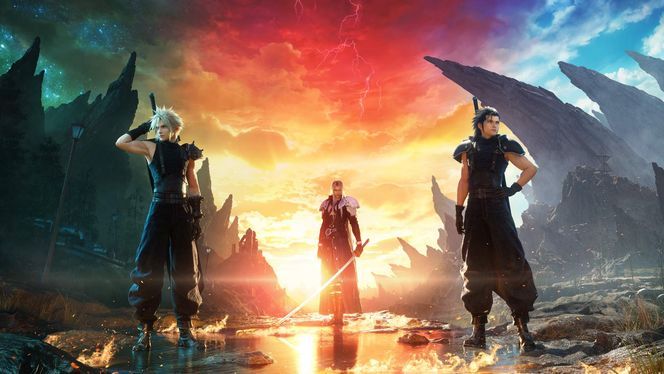
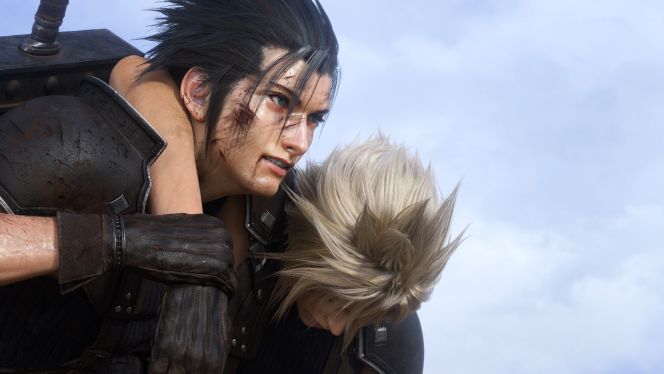
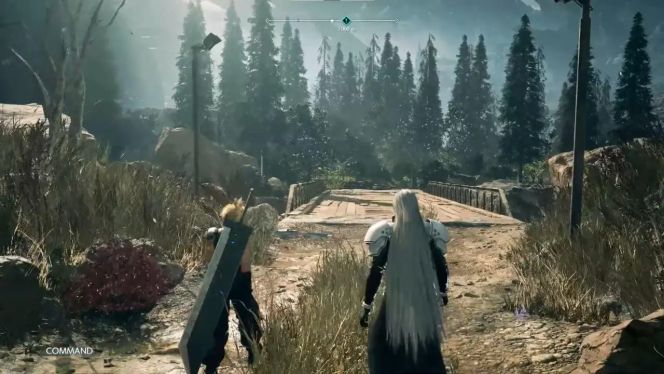
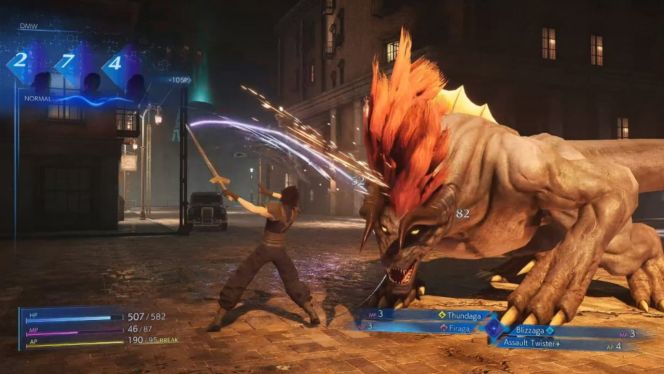
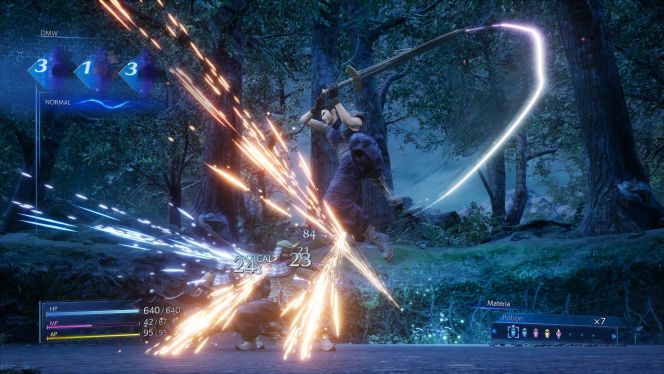
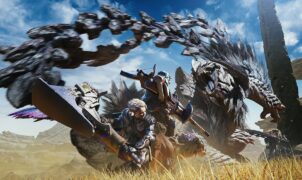

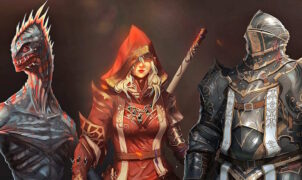


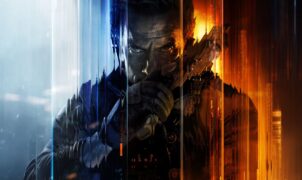
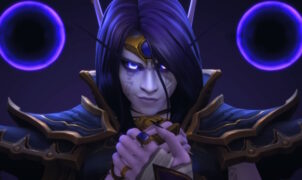




Leave a Reply